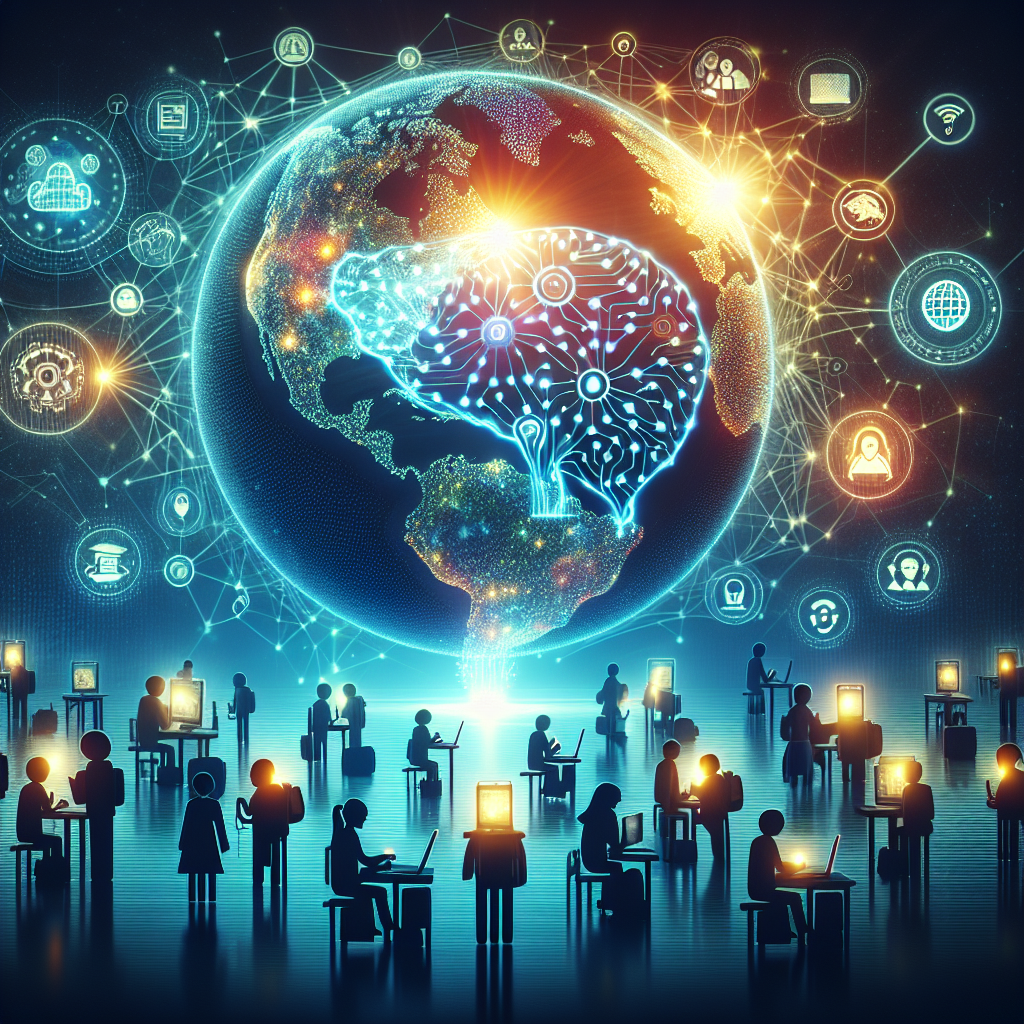Artificial Intelligence (AI) has rapidly transformed various industries, and one area where its impact is particularly significant is global education. AI technologies have the potential to connect students across borders, providing them with new opportunities for learning and collaboration. In this article, we will explore how AI is shaping global education and the benefits it offers to students around the world.
One of the key ways in which AI is revolutionizing global education is through personalized learning experiences. AI-powered platforms can analyze individual student data and provide tailored learning materials and assessments based on their unique strengths and weaknesses. This personalized approach helps students learn at their own pace and in a way that suits their learning style, leading to improved academic performance and engagement.
Furthermore, AI can also facilitate cross-cultural collaboration among students from different countries. Virtual classrooms powered by AI technologies enable students to connect with peers from around the world, breaking down geographical barriers and fostering a sense of global citizenship. Through these virtual exchanges, students can learn about different cultures, share perspectives, and work together on projects that promote mutual understanding and cooperation.
Another significant benefit of AI in global education is the accessibility it provides to students in remote or underserved regions. AI-powered learning platforms can deliver educational content to students in areas with limited resources, allowing them to access high-quality learning materials and resources that would otherwise be unavailable to them. This democratization of education ensures that all students, regardless of their geographical location, have access to a quality education.
AI also has the potential to revolutionize language learning, making it easier for students to acquire new languages and communicate with peers from different countries. AI-powered language learning apps can provide real-time feedback on pronunciation, grammar, and vocabulary, helping students improve their language skills quickly and effectively. This can be particularly beneficial for students who are learning a second language as it allows them to practice speaking and listening in a supportive and interactive environment.
Furthermore, AI can also assist in the assessment and evaluation of student performance, providing teachers with valuable insights into student progress and identifying areas where additional support may be needed. AI-powered assessment tools can analyze student data and provide feedback on areas where students are struggling, enabling teachers to tailor their instruction to meet individual student needs. This data-driven approach to assessment can help improve student outcomes and ensure that all students receive the support they need to succeed.
Despite the numerous benefits of AI in global education, there are also some challenges and concerns that need to be addressed. One of the main concerns is the potential for bias in AI algorithms, which can perpetuate existing inequalities and disadvantage certain groups of students. It is essential for developers to ensure that AI systems are designed and trained in a way that minimizes bias and promotes fairness and equity in education.
Another challenge is the need for adequate training and professional development for teachers to effectively integrate AI technologies into their teaching practice. Teachers need to be equipped with the necessary skills and knowledge to leverage AI tools and resources effectively, ensuring that they can support students in their learning and provide valuable guidance and feedback.
Furthermore, there are also concerns about data privacy and security when using AI technologies in education. It is essential to ensure that student data is protected and that appropriate safeguards are in place to prevent unauthorized access or misuse of sensitive information. Schools and educational institutions must prioritize data security and privacy to maintain the trust and confidence of students and parents.
In conclusion, AI has the potential to revolutionize global education, connecting students across borders and providing them with new opportunities for learning and collaboration. By leveraging AI technologies, students can benefit from personalized learning experiences, cross-cultural collaboration, and enhanced language learning opportunities. However, it is essential to address the challenges and concerns associated with AI in education, such as bias, training for teachers, and data privacy, to ensure that all students can benefit from the transformative power of AI in global education.
FAQs:
Q: How can AI improve personalized learning experiences for students?
A: AI technologies can analyze individual student data and provide tailored learning materials and assessments based on their unique strengths and weaknesses, allowing students to learn at their own pace and in a way that suits their learning style.
Q: How can AI facilitate cross-cultural collaboration among students?
A: AI-powered virtual classrooms enable students to connect with peers from different countries, fostering a sense of global citizenship and allowing students to learn about different cultures, share perspectives, and work together on projects that promote mutual understanding and cooperation.
Q: What are some of the challenges associated with using AI in global education?
A: Some of the challenges include the potential for bias in AI algorithms, the need for adequate training for teachers, and concerns about data privacy and security when using AI technologies in education.
Q: How can schools and educational institutions ensure that student data is protected when using AI technologies?
A: Schools and educational institutions must prioritize data security and privacy, ensuring that appropriate safeguards are in place to prevent unauthorized access or misuse of sensitive information. It is essential to comply with data protection regulations and implement robust data security measures to protect student data.

